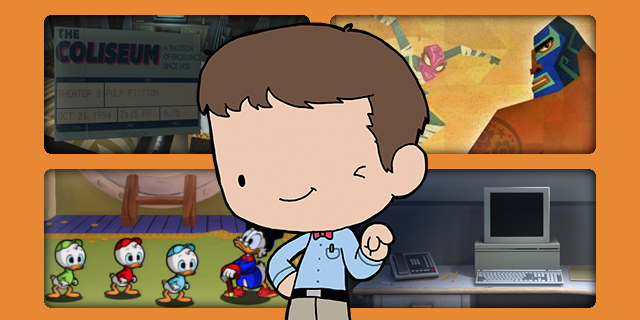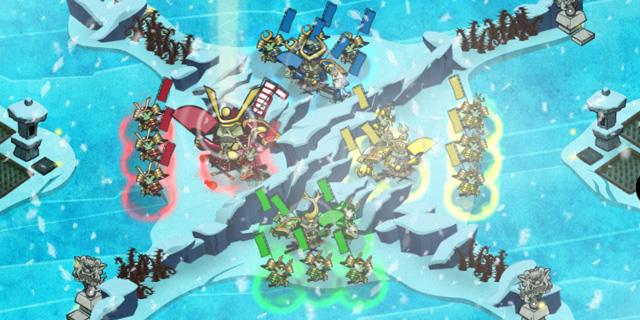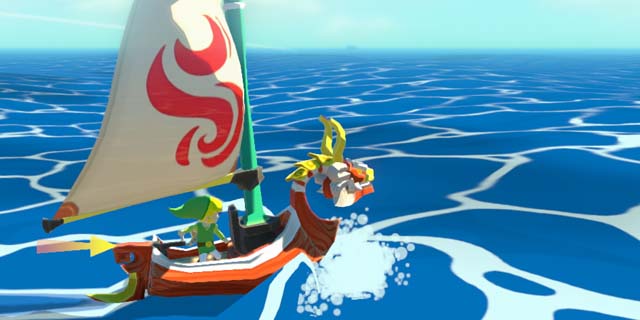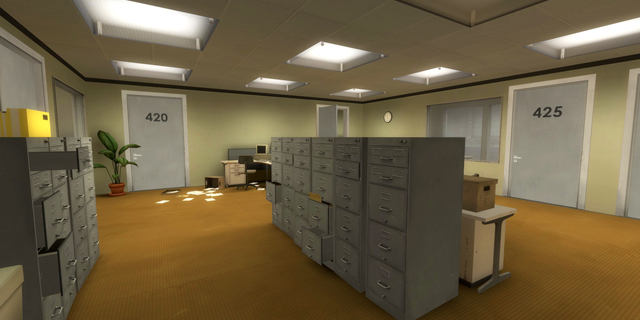
10. Ni no Kuni: Wrath of the White Witch
The 32-bit era has long since passed, so it’s not every day that we are blessed with a big-budget, high-profile JRPG. These days, even longstanding titans of the genre are relegated to portable releases almost exclusively. Clocking in at over 50 hours of gameplay, offering a stunning art direction thanks to the masterminds at Studio Ghibli and supported by the strong foundation of Level-5’s role-playing expertise, Ni no Kuni satisfied a desire that fans of the genre have been craving for a long while.
9. Rymdkapsel
The exploration of different aesthetic principles’ relation to gameplay elements has been a concept more deeply explored in this generation. In particular, the direct proportionality between minimalistic art design and mechanical abstraction. Rymdkapsel was a textbook example of how to take a genre typically renown for its depth, complexity and realism and reduce it down to its most basic components, as well as how the aesthetics come along for the ride. Using a literal take on cubism and an isometric perspective, Rymdkapsel used color coding and sound design to do most of its expository heavy-lifting, and trusted the player to fill in the blanks themselves. This level of trust and confidence is rare in modern games, and to see such a shining example of it is truly heartening.
8. Skulls of the Shogun
Convergence can be a great thing in the hands of a talented developer. Serving as the big, hardcore title to launch across all three of Microsoft’s major platforms (Xbox 360, Windows 8, and Windows Phone 8), Skulls of the Shogun showed us a glimpse of the connected future. Featuring cross-platform gameplay and cloud-synchronized saving as neat technical tricks, Skulls was still wise enough to understand that a strategy game lives or dies based on its flexibility. Thankfully, it was able to create a smooth, fast and tactile turn-based strategy experience that translated beautifully to all three platforms.

7. Pokémon X & Y
Pokémon seems to be one of the few franchises still active that is able to keep adding a constant stream of new features and ideas without ever feeling over-encumbered. The flagship titles on Nintendo’s newest handheld continued this legacy, and created one of the most enjoyable adventures in the series since generation 3. In a bold move for Nintendo, one of the major new additions was some insular social communication features. This network fulfilled a lot of untapped potential inherent in the Pokémon experience, and made the game feel truly modern, a rare thing for a Nintendo game.
6. Guacamelee!
Developer Drinkbox has tested its mettle on Sony platforms before, having been on the ground floor for the Vita’s launch with one of its best first-wave titles. However, it wasn’t until this year that we saw the reaches of its creativity and design chops with Guacamelee!‘s release. Sporting tight controls, lots of hidden areas and secret goodies, an eye-catching Mexican audiovisual flair and a charming sense of humor, the game won its way into the hearts and minds of Metroidvania fans everywhere.
5. The Legend of Zelda: The Wind Waker HD
How do you take one of the prettiest games ever made and make it look even better? Well, Nintendo found a way. A full-fledged remake of the GameCube classic, Wind Waker HD featured new textures, 1080p resolution and a smattering of fancy new effects. The gameplay also received several minor tweaks and improvements, in effect fixing nearly every mechanical criticism levied against the game’s initial release. Moreover, the new inventory and map management system makes navigating dungeons a delight, and makes an already-stellar game nearly perfect.

4. Rayman Legends
Just a few years ago, no one would have expected Rayman to make the the comeback that he did, especially after being shoved out of the Rabbids franchise so quickly. Ubisoft surprised everyone the the sublime Rayman Origins two years ago, and did so again this year with its superior sequel. Rayman Legends gets its spot on this list for being able to fix things that we didn’t even realize in the original game, while adding tons of new level types and multiplayer options, as well as a fancy new graphical sheen. Rayman Legends would be the best platformer we have seen in ages, if it weren’t for the next entry on this list…
3. Super Mario 3D World
It’s sadly very rare to see a game with a high-profile release focus so evidently on giving the player a sense of joy. Far too many games drench themselves in dour, bleak narratives and design decisions that it is downright healing to be able to play a game like Super Mario 3D World that does everything it can to make you smile. The game has delightfully imaginative levels, a soft pastel color palette, power-ups that are satisfying to use and some of the best co-op play on any console, ever. Super Mario 3D World is the platformer that other platformers wish they could be. Even for Nintendo, who are world-renown for their work in the genre, this is a stunning achievement.
2. Gone Home
One of the main reasons Gone Home is so remarkable is just how ordinary it feels. The game doesn’t feature any grand quests or anything supernatural; you feel like you’re exploring an ordinary family’s house. You feel like you’re getting to know real people, and the struggles they go through. The fact that the bulk of the narrative is told through your surroundings is one of the best testaments to the power of games as an artistic medium that I have seen so far. Gone Home feels refreshing and organic in a way that our medium seems to have forgotten how to do.

1. The Stanley Parable
It’s not every day that a game like The Stanley Parable comes along. Even when it does, it rarely gets the attention it deserves. Thankfully, we were lucky enough to see this game released, and experience the relevant, thoughtful and critical meta-commentary on the nature of agency in an interactive space. The Stanley Parable is a game that wants to make you think about the decisions you are making in it, along with their significance and weight. It also makes you want to question why and if it matters in the first place. By creating a space where the illusion of choice is both the butt of the joke, the joke itself and a cruel trap, the game does what few others have the skill to do with the medium, and shows us the limits of our own creations.



















